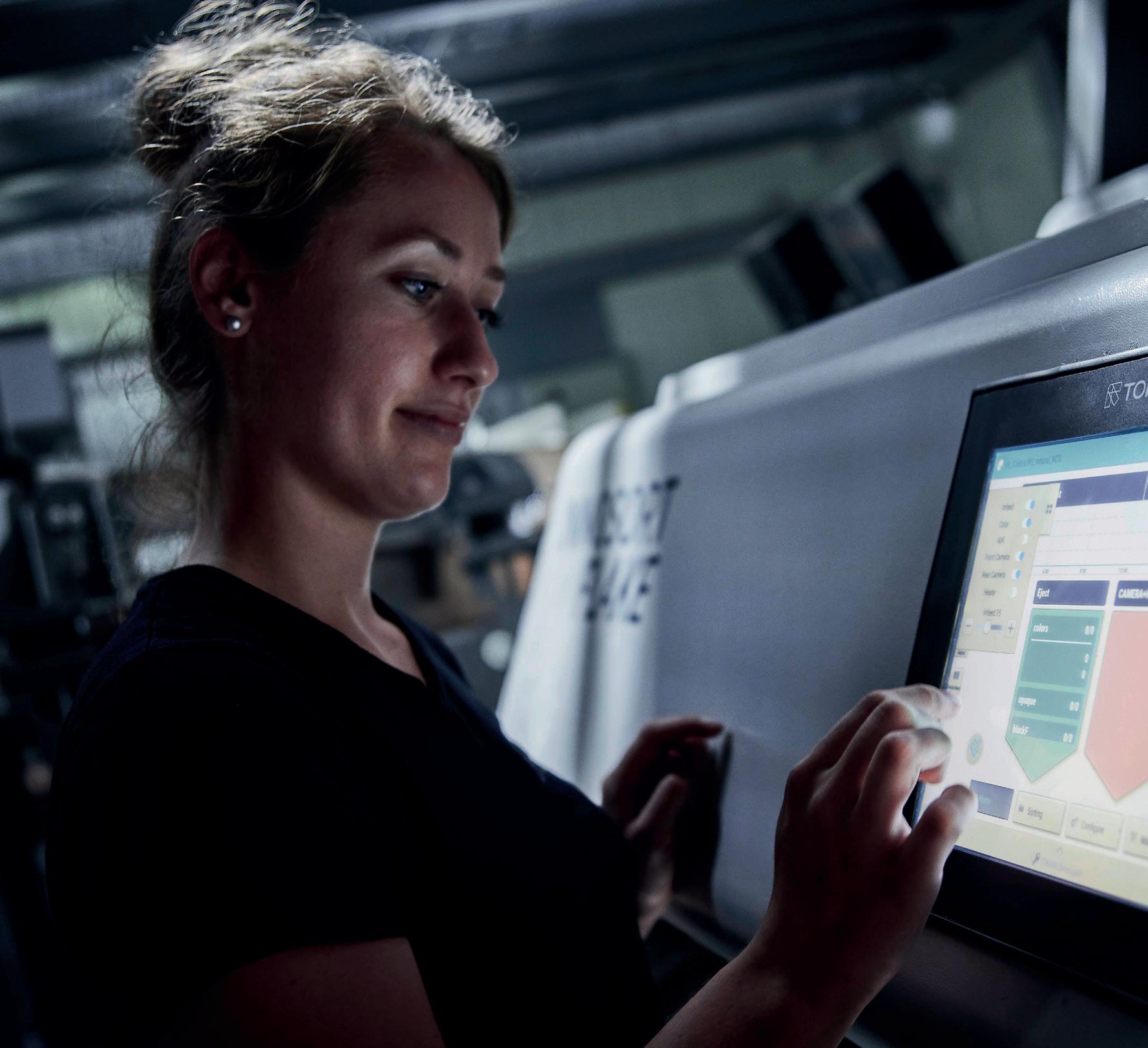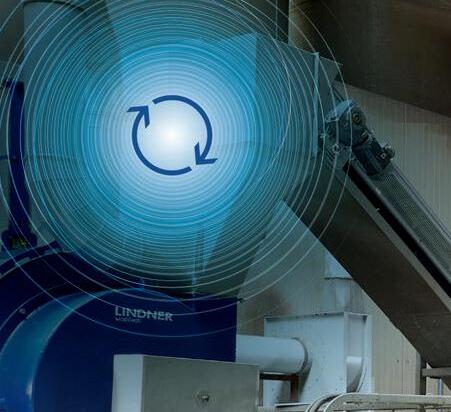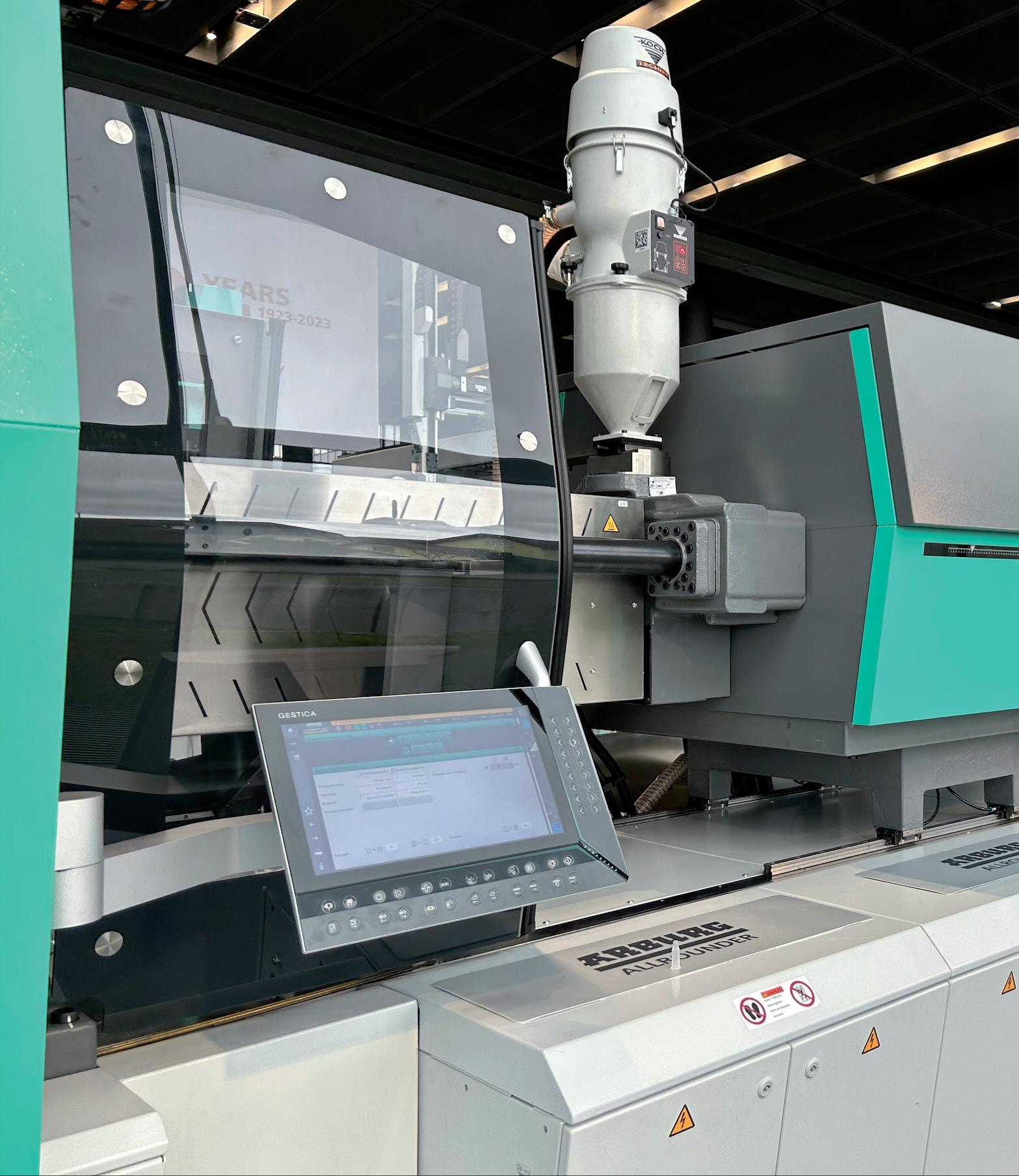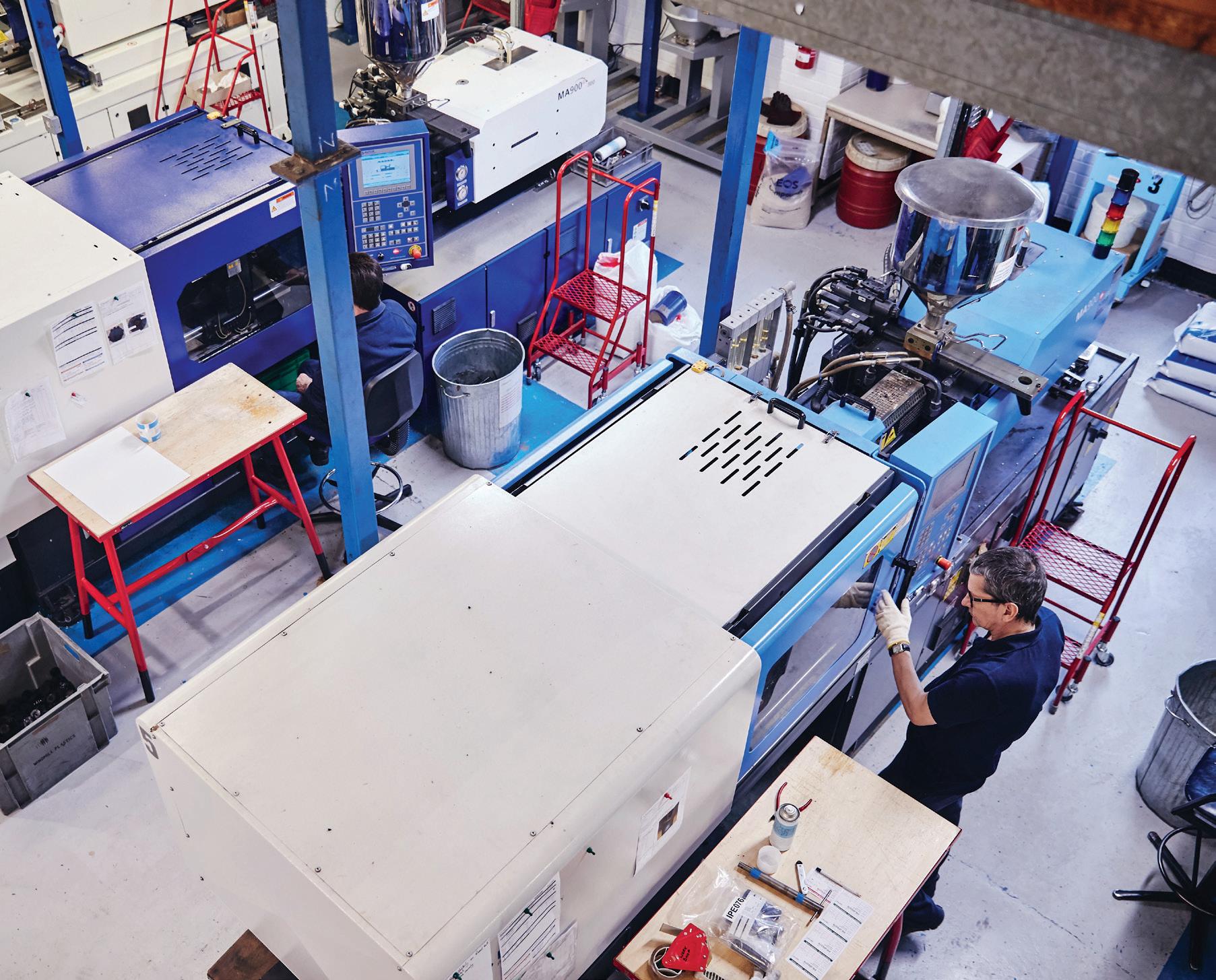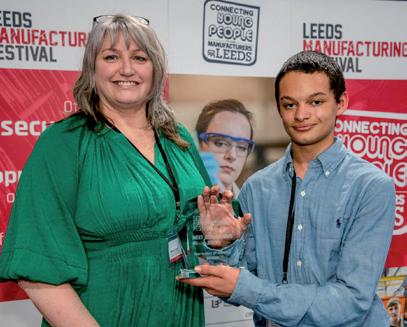
5 minute read
recycled resin
from BP&R Mar 23
quality and quantity gap for polyolefins (PO), polyethylene terephthalate (PET) and a growing number of other applications. Recyclers using the latest flake sorting technology can capture more types of material, maximise yield and maintain profitable operations.
Quantum leap in recyclates quality

Flake sorting is no stranger to plastic recycling. It allows for the creation of highpurity mono fractions of one material type and/or colour and is the last purification step before the target fractions go into extrusion. Thus, it is an indispensable component of the recycling process and directly impacts the final quality and yield of the recyclates.
To date, flake sorters are already integrated into numerous bottle recycling plants around the world but hold much more potential. They can also be used for treating mixed plastic waste, unleashing new streams of available feedstock and improving recyclates quality. Often, where no advanced flake sorting solutions are in place, the end product is a mix of different polymer types and, in some cases, numerous colours. Since this fraction contains several distinct product types, its quality levels are low and it can only be used for lowergrade applications, for which demand and value are marginal. The demand for superior secondary feedstock on the other hand is skyrocketing, spurred by stringent recycled content targets as well as the improvement of individual sustainability credentials. With
ABOVE: Flake sorter purifying post-consumer plastics
INSET: Mixed plastic waste advanced flake sorting, recyclers can easily upgrade their products and create new revenue streams.
High volumes of superior feedstock at hand
A plastic recycler can process more than 100,000 tonnes of polymer flakes per year, depending on market demand and material availability. With recent shortages of available materials, adaptability is key to maintaining profitable business. Waste streams and market demands are, in fact, highly dynamic. If the supply of recyclable polymers on the market is limited, but demand is high, plant operators often have little choice but to turn to more contaminated postconsumer waste to meet market demands. Exceptional purity requirements persist regardless of the volume to be processed and the type of recoverable feedstock, challenging recyclers to reach even higher qualities from increasingly more contaminated sources.
Compared to other processing machinery, flake sorters are a gateway to overcoming feedstock volatility. Compact in size, easy to install and flexible in operation, they prove to be a sound investment for small and large operations alike. Advanced flake sorting can process fluctuating levels of contamination without compromising recovery and purity levels. Equipped with a set of sophisticated technologies that are a fundamental part of the recycling process, they help turn low-quality input material into pure flakes that meet even the strictest quality requirements. This gives recyclers access to material that previously couldn’t be recovered, squeezing out the maximum value from available fractions.


A good example of creating new revenue streams is the sorting of polyolefins. Holding the lion’s share in global plastic production, the availability of PO on the market is abundant and offers a lot of potentials as the industry strives to use more recycled PO in the manufacture of high-quality products. Nevertheless, upgrading polyolefins presents its own set of challenges. Whereas PET bales processed in a recycling facility mostly consist of only one target material (PET), PO bales are a mix of two valuable materials: polyethylene (PE) and polypropylene (PP). The share of each material type in the PO infeed is hard to predict and can change with each bale. One bale could be a 50/50 mix of PE and PP, and the next could be a 70/30 mix.
Colour

Irrespective of the input composition, both PE and PP flakes must be accurately identified and separated to create highpurity fractions for recycling.
Until advanced flake sorting and purification methods were introduced, the infrastructure lacked the technology to separate PP from PE cost-effectively. Less sophisticated flake sorters can solely purify one material type and remove only small amounts of contaminants, thereby often limiting their use to PET recycling plants. Furthermore, higher throughputs were hard or impossible to realise. For example, if a recycling plant uses less advanced flake sorters to process a PO bale composed of 60% HDPE and 40% PP (not considering other contaminants), the infeed would have to be sorted by beltsorters before shredding, when the material size is big enough to allow for accurate separation of PE and PP. Consequently, shredding, washing and flake sorting would have to happen in parallel on two different lines, driving up costs significantly. With the aim to operate more profitably, recycling plants would prefer to process the material in batches on a single line. The downside of this approach is a reduction in total throughput. Moreover, it remains costly due to extensive material handling, such as re-baling, storage and manpower. These are some of the main challenges impeding the upgrading of PO to higher quality recyclates.
Modern sensor-based flake sorters are a game-changing technology for the industry in the above-mentioned scenario. They are capable of detecting and accurately sorting polyolefins by polymer type, as well as separating different colours, generating multiple fractions at the same time. With the integration of the most advanced flake sorting technologies in a recycling plant, materials can be shredded and washed in a single line before entering the flake sorting process. This, in turn, eliminates the need for multiple lines or batch processing. Embracing these solutions gives recyclers access to huge quantities of post-consumer materials to create high-purity fractions of rPE and rPP.
Flexibility for predictably higher yield
Infeed materials continue to become more complex. Depending on the respective contamination level and purity requirements, supplementary sorting steps are often required to purify the target fraction. Smaller operators with flake sorting installations can reap a lot of benefits from the system’s capabilities and efficiencies. First, flake sorters can be easily integrated into existing plants because they require little space compared to other processing machinery, which makes them ideal for upgrading the sorting and purification capabilities of an existing recycling line. Second, it is possible to run multiple sorting steps within a single unit. This means operators can choose to balance throughput in favor of higher recovery rates and purity levels as needed. At the same time, smaller recycling companies can profit from the flexibility of processing a wider range of materials, thanks to the possibility of working in batches on a single unit. The scenario is different in high-volume plants, where operators can install multiple sorting machines in parallel or cascade setups to maximise throughput and qualities without increasing operation times. Regardless of the installation setup, flake sorters offer unrivaled flexibility, performance and generate reliable flake qualities. Thus, the sorting results are predictable and so is the recycler’s yield.
Blue skies ahead
Today, an extensive product portfolio of flake sorting solutions exists to meet both current and future demands. Plastic recyclers on the quest to source more materials or scale up their operations rely on best-in-class flake sorters. Whether PET, PP or PE, clear, blue, green or any opaque coloured materials, today’s advanced systems produce high–purity, mono-material and colour-segregated fractions. Moreover, they withstand tough conditions, process large volumes and produce high-quality secondary feedstock. Flake sorting machines save space and reliably generate predictable results that lead to maximum yield. Their efficiency paired with the system’s flexibility enable a rapid return on investment and give operators a competitive edge, now and in the long term.

The potential flake sorting holds is very promising and future-forward. When these technologies are integrated at scale and combined with modern extrusion and deodourisation processes, the future of plastics recycling will make an evolutionary change.

